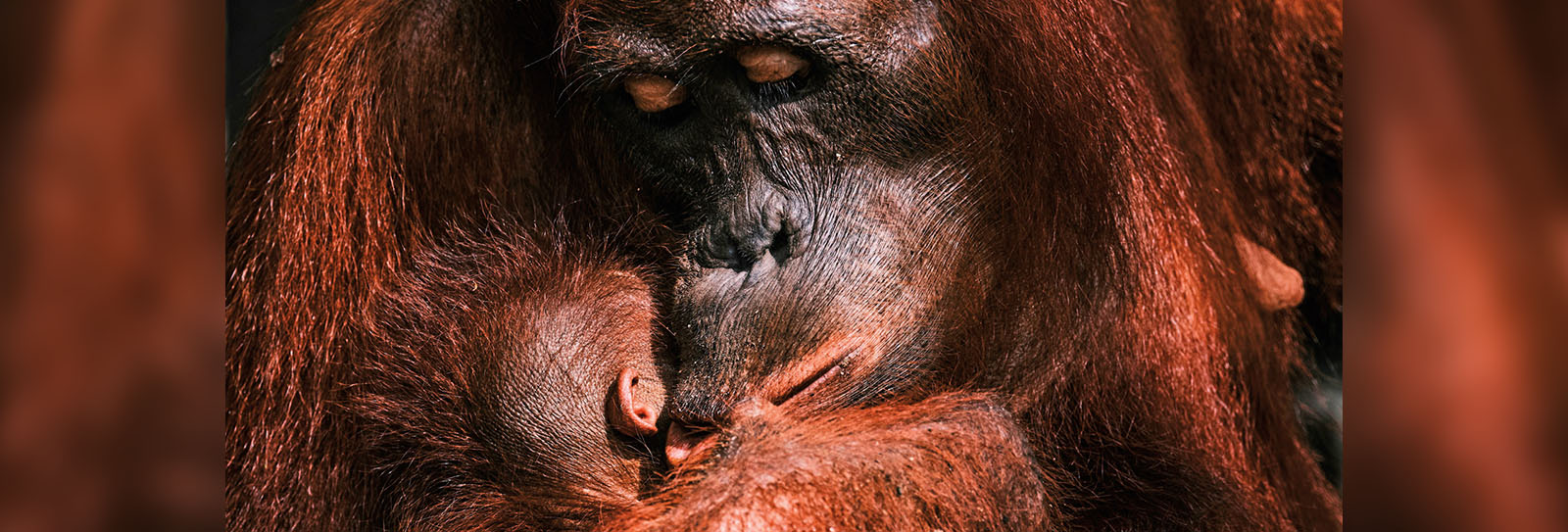
For more than eight hours, we navigated the Sekonyer River in a wooden boat, cruising through Tanjung Puting National Park in the Central Kalimantan region of Borneo, Indonesia. After docking, we walked about an hour in the lush rainforest. Then, our tour guide and ranger, Adut, placed corn and yams on top of a wooden table.
It was not long until orange-haired Bornean orangutans began to approach the table. More than five were carrying babies. Seeing so many newborns was, Adut informed us, highly unusual. He conjectured that the park’s closure and resulting prolonged quiet due to the pandemic may have contributed to an optimal primate mating environment.
Observing the orangutans, I saw how intimately bonded the mothers were to their babies and how deeply they seemed to express love in every movement with them. As I watched a nearby mother and infant embrace, I photographed this magnificent moment as the mother was tenderly kissing her child’s neck.
Orangutans are listed as critically endangered on the International Union for Conservation of Nature’s Red List of Threatened Species, mainly because of habitat loss—in Indonesia they have lost 80 percent of their forest area. Sanctuaries like the Tanjung Puting National Park are helping to preserve their lives and future. And while I was happy to see so many new families among them, it impressed on me the urgency of finding ways to thwart deforestation.
—Beawiharta
@beawiharta
You may also be interested in...

FirstLook: Rain in Fayoum
Arts
I took this photo during a rainy day in November 2018 from the window of my family home in Fayoum, Egypt, located about 100 kilometers southwest of the capital. It hardly rains but a few times in the year in most parts of Egypt, and when it does, it is always something special, bringing Joy and happiness particularly for the local children.
FirstLook: The Beauty of the Streets
Arts
This photo series began unexpectedly when I found that photographing people behind windows and maintaining a distance made me, and the people I photographed, feel more comfortable. I purposefully frame myself in the reflection of the window to see into the space I’m photographing. I feel every window tells a different story.
FirstLook: Ramadan’s Lanterns
Arts
In the March/April 1992 issue, writer and photographer John Feeney took AramcoWorld readers on a walk through the streets of Cairo during Ramadan.